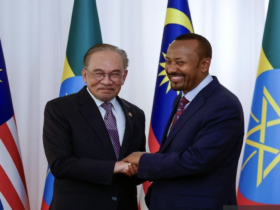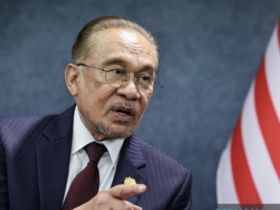PHNOM PENH, Nov 20 — Struggling Myanmar welcomed about 800,000 tourists up to October this year, signalling the tourism sector’s lacklustre growth as the country grapples with a plethora of challenges, from power supply issues to connectivity.
Natural disasters, political instability, and safety concerns continue to stifle the tourism industry’s growth in Myanmar, known for its pristine beaches, rainforests, wildlife, and renowned archaeological sites.
The ASEAN+3 Macroeconomic Research Office (AMRO), in its report published on Thursday, said that Myanmar’s tourism sector has the potential to grow, but it needs to fix its fundamental issues to revive the industry.
“Myanmar has seen a gradual recovery since 2022, and proactive policy measures signal strong potential for sustained growth in tourism, contributing to economic development and job creation across the country.
“Overcoming structural constraints is key to unlocking tourism’s growth potential,” said the report titled “Myanmar’s Tourism Industry: Recent Developments, Prospects and Challenges Ahead”.
The report identified major challenges, including restoring flight connectivity, ensuring an adequate power supply, improving road transportation, and rebuilding confidence in the tourism industry.
Myanmar has only 19 direct international flight connections across 10 countries as of August 2025, a low number compared to many of its regional peers, said AMRO.
The Singapore-based AMRO think-tank emphasised the urgent need to review the sector, which remains a central pillar of Myanmar’s economy, generating millions of jobs across diverse areas such as hospitality, transportation, and local enterprises.
Since the military coup on Feb 1, 2021, Myanmar’s economic growth has faltered, and the tourism sector has similarly suffered, with the number of foreign visitors dwindling.
To add to its woes, the country faces multiple natural disasters each year—typhoons, earthquakes, floods, and landslides—that damage vital infrastructure such as bridges, power plants, and roads.
“Myanmar’s tourism sector is significantly impacted by the country’s long-standing power supply issues.
“The combination of increased electricity demand, declining power generation, and frequent blackouts is hindering tourism operations and development,” it said.
The report highlighted that, in addition to geopolitical challenges, the sector must adapt to increasing regional competition and changing international travel trends.
Myanmar also faces growing competition from neighbouring countries, mainly Thailand, Vietnam and Cambodia, that boast well-established tourism infrastructures to woo foreign visitors.
“Since the (COVID-19) pandemic, the tourism landscape has also evolved, with changing international travel behaviour, such as preferences for digital convenience and sustainable practices.
“These factors present considerable challenges for Myanmar as it seeks to unlock the full potential of its tourism industry in the years ahead,” said AMRO, adding that the industry is crucial for economic growth, job creation and poverty alleviation across the country.
Myanmar is home to about 54 million people.


-加码-scaled.jpg)

-加码-scaled.jpg)













Leave a Reply